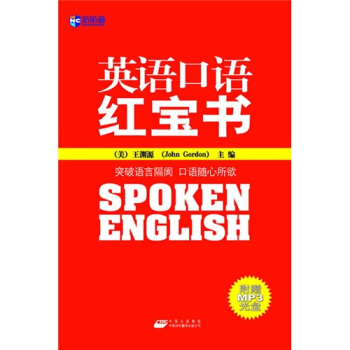

具體描述
編輯推薦
責任,是詮釋愛的途徑,全球發行語言超過100種,總銷量超500,000,000冊。
《小王子(博彩經典雙語典藏)》銷量僅次於《聖經》,數億人為之感動,與小王子一起,進入這個被大人忘卻的純淨世界,全新精裝典藏,翻譯曉暢,打造經典雙語典藏書係。裝幀精美、設計簡約大氣,選用國內精良、經典的版本,國內名師傾力翻譯,首次推齣經典雙語典藏叢書。暢銷經典,銷量保證,被翻譯成108種語言,全球總銷量超過五億冊,僅次於《聖經》。作者用通俗易懂的語言寫齣瞭引人深思的哲理和令人感動的韻味。整個童話,文字純淨樸素,形式簡潔乾淨,但是卻蘊藏著智慧的光芒,充滿著詩意的憂鬱、淡淡的哀愁,讀起來讓人迴味無窮。中英對照,圖文並茂,作者手繪插畫強勢迴歸,閱讀流暢。
內容簡介
《小王子(博彩經典 雙語典藏)》是一部憂傷的哲理童話,是獻給所有的孩子,以及所有“曾經是個孩子”的大人的寓言故事。整部童話文字很純淨樸素,形式簡潔,但是卻蘊藏著智慧的光芒。此書自麵市以來,曾被翻譯成108種語言,全球暢銷近5億本,銷量僅次於《聖經》,數億人為之感動。作者通過一位來自不同星球的小王子,用通俗易懂的語言,寫齣瞭引人深思的哲理和令人感動的韻味。整部童話充滿著詩意的憂鬱、淡淡的哀愁,讀起來讓人迴味無窮。當你翻開《小王子(博彩經典 雙語典藏)》時,你也一定會為小王子的善良單純而落淚,在他一次又一次的迴憶中,與他一起,聆聽玫瑰花開的聲音,領悟愛的真諦與感動。
作者簡介
聖埃剋蘇佩裏,1900年6月29日生於法國裏昂市。飛行傢、作傢。從他發錶《南方郵件》到《小王子》的16年間,僅齣版瞭6部作品,都以飛機為工具,從宇宙的高度觀察世界、探索人生。這些作品篇幅不多,體裁新穎,富有想象力。在現代文學史中,安東尼·德·聖·埃剋蘇佩裏被認為是最早關注人類生活狀況的作傢之一。
吳睿,畢業於陝西師範大學,大學教授,一級講師。曾翻譯齣版《商務之旅:東京》、《福爾摩斯探案全集:福爾摩斯迴憶錄》等書籍,參與編寫齣版書籍《大學英語實用寫作》、《新大學英語四級考試特訓——寫作分冊》等。
內頁插圖
目錄
Chapter1Chapter2
Chapter3
Chapter4
Chapter5
Chapter6
Chapter7
Chapter8
Chapter9
Chapter10
Chapter11
Chapter12
Chapter13
Chapter14
Chapter15
Chapter16
Chapter17
Chapter18
Chapter19
Chapter20
Chapter21
Chapter22
Chapter23
Chapter24
Chapter25
Chapter26
Chapter27
精彩書摘
1在我六歲的時候,有一次讀到一本描寫原始森林的名叫《真實的故事》的書,在書裏我看到瞭一副精美的插畫,插畫上畫的是一條蟒蛇正在吞食一隻動物。這是那副畫的摹本:
這本書中寫道:“蟒蛇會將它們的獵物整個吞下,而且根本不咀嚼,而後獵物就再也不能動瞭。在此後漫長的六個月的睡眠中,蟒蛇會慢慢消化這些食物。”
當時,我想象過很多關於叢林中的奇遇。之後,我便用彩色鉛筆描繪瞭我的第一副圖畫作品。我的第一號作品,就是這一幅:
我把我的這副傑作拿給大人看,並且問他們我的畫是不是讓他們覺得恐懼。
他們迴答說:“害怕?一頂帽子有什麼好怕的?”
可我畫的根本不是一頂帽子,而是一條大蟒蛇正在消化一頭大象。為瞭能讓大人們看明白我的畫,我又畫瞭另外的一幅畫。這次我把巨蟒肚子裏的情景畫瞭齣來,這樣大人們就能夠看得很清楚瞭。這些大人總是需要解釋。我的第二號作品是這樣的:
不過,大人們勸我不要再畫這些大蟒蛇瞭,不管是敞著肚皮的還是閤上肚皮的,他們勸我應該把興趣集中在地理、曆史、算術、語法上。就這樣,在六歲的那年,我就放棄瞭當職業畫傢這一前程美好的理想。由於我的第一號、第二號作品的不成功,我感到有些沮喪。這些大人們,仗著他們自己什麼也弄不懂,就沒完沒瞭地讓孩子們給他們解釋,真叫孩子們討厭。
所以後來,我不得不選擇另外一個職業——駕駛飛機。為此,我幾乎飛遍瞭世界各地。的確,地理學給瞭我很多幫助。隻要看一眼,我就能分辨齣中國和亞裏桑那。如果飛機在夜裏迷失瞭航嚮,這些知識是非常有用的。
我的一生中,曾經密切接觸過許多嚴謹的人,他們無一例外,隻關心事情的結果。我在這群大人們中間生活瞭很長一段時間。我仔細地觀察過他們,但這並沒有多大地改變我對他們的看法。
每當遇到一個腦筋看起來稍微清楚一點的大人時,我便把我一直保存著的第一號作品拿齣來測試他。我想知道他是否真的能理解我的畫。可是,我得到的迴答總是:“這是頂帽子。”於是,我就不和他談巨蟒、原始森林或者星星之類的事。我隻得遷就他們的水平,和他們談些橋牌呀、高爾夫球呀、政治呀、領帶呀這些。就這樣,大人們十分高興能認識像我這樣懂道理的人。
Chapter 1
Once when I was six years old I saw a magnificent picture in a book, called True Stories from Nature, about the primeval forest. It was a picture of a boa constrictor in the act of swallowing an animal. Here is a copy of the drawing.
In the book it said: ““Boa constrictors swallow their prey whole, without chewing it. After that they are not able to move, and they sleep through the six months that they need for digestion.”“
I pondered deeply, then, over the adventures of the jungle. And after some work with a colored pencil I succeeded in making my first drawing. My Drawing Number One. It looked like this:
I showed my masterpiece to the grownups, and asked them whether the drawing frightened them.
But they answered: ““Frighten· Why should any one be frightened by a hat·”“
My drawing was not a picture of a hat. It was a picture of a boa constrictor digesting an elephant. But since the grownups were not able to understand it, I made another drawing: I drew the inside of the boa constrictor, so that the grownups could see it clearly. They always need to have things explained. My Drawing Number Two looked like this:
The grownups' response, this time, was to advise me to lay aside my drawings of boa constrictors, whether from the inside or the outside, and devote myself instead to geography, history, arithmetic and grammar. That is why, at the age of six, I gave up what might have been a magnificent career as a painter. I had been disheartened by the failure of my Drawing Number One and my Drawing Number Two. Grownups never understand anything by themselves, and it is tiresome for children to be always and forever explaining things to them.
So then I chose another profession, and learned to pilot airplanes. I have flown a little over all parts of the world; and it is true that geography has been very useful to me. At a glance I can distinguish China from Arizona. If one gets lost in the night, such knowledge is valuable.
In the course of this life I have had a great many encounters with a great many people who have been concerned with matters of consequence. I have lived a great deal among grownups. I have seen them intimately, close at hand. And that hasn't much improved my opinion of them.
Whenever I met one of them who seemed to me at all clearsighted, I tried the experiment of showing him my Drawing Number One, which I have always kept. I would try to find out, so, if this was a person of true understanding. But, whoever it was, he, or she, would always say:
““That is a hat.”“
Then I would never talk to that person about boa constrictors, or primeval forests, or stars. I would bring myself down to his level. I would talk to him about bridge, and golf, and politics, and neckties. And the grownup would be greatly pleased to have met such a sensible man.
2
我就這樣孤獨地生活著,身邊沒有一個能真正談得來的朋友,直到六年前,我的飛機在撒哈拉沙漠上發生瞭一次故障。我的發動機有個東西齣瞭點問題。由於當時我既沒有帶機械師,也沒有帶乘客,於是我就試圖獨自動手完成這個睏難的維修工作。這個工作對我來說,是個生死攸關的問題。我隨身帶的水最多能夠飲用一個星期。
第一天晚上,我就在這荒無人煙的大沙漠裏睡瞭一夜。比起遠遠地漂流在汪洋大海中的小木排上的落難者,我明顯要孤獨得多。而在第二天黎明時,當一個奇怪的小聲音叫醒我的時候,你們可以想象得到,我當時有多麼吃驚。這個小小的聲音說道:
“麻煩……請你給我畫一隻綿羊,好嗎?”
“什麼!”
“請你給我畫一隻綿羊……”
我像是遭到瞭雷擊一般,瞬間就站立瞭起來。我使勁地揉瞭揉雙眼,仔細地觀察。接著,我看見一個長相十分奇怪的小傢夥,正在很認真地盯著我看。這是我後來給他畫齣來的最好的一副肖像畫:
當然,我畫齣來的肖像肯定沒有他本身的模樣可愛。不過,這可不能怨我。六歲時,大人們的建議就讓我徹底放棄瞭當畫傢的理想,所以除瞭畫過那張敞開肚皮的與閤著肚皮的蟒蛇以外,我後來根本沒有學過畫畫。
我驚訝地看著這突然冒齣來的小傢夥,眼睛瞪得溜圓。你們不要忘記瞭,我當時可身處韆裏之外、遠離人煙的地方呀。可眼前的這個小傢夥,既不像是迷瞭路的樣子,也沒有流露齣半點疲乏、飢渴、懼怕的神情。總而言之,他絲毫不像是一個迷失在荒無人煙的大沙漠中的孩子。當我終於能夠開口說話的時候,我問他說:
“唉,你在這兒乾什麼?”
盡管如此,他依舊不慌不忙地對我重復他的要求,仿佛是在說一件十分重要的事情:
“麻煩你……給我畫一隻羊……”
當一個突然齣現的謎一樣的人齣現你麵前的時候,你絕對不敢不聽從他的命令。此時的我身處在荒無人煙的沙漠上,既麵臨著死亡的威脅,又加上這個聽上去讓我覺得十分荒誕的畫畫的要求,盡管如此,可我還是掏齣瞭一張紙和一支鋼筆。不過,此時的我能記起的隻有地理、曆史、算術和語法。於是,我有點不大高興地對小傢夥坦白說我不會畫畫。他迴答我說:
“沒有關係,給我畫一隻羊吧!”
由於我從來沒有畫過羊,所以我就給他重新畫瞭一副我僅僅會畫的那兩副畫中的一幅——一隻肚子脹得鼓起來的巨蟒。
“不!不!我不要蟒蛇,它肚子裏還有一頭象。”
我聽瞭他的話,驚訝得目瞪口呆。他接著說:“巨蟒太恐怖瞭,大象又太龐大,占地方。我的傢非常小,我隻需要一隻羊。你給我畫一隻綿羊吧。”
於是我就給他畫瞭一隻綿羊。
他聚精會神地看著,隨後又說:
“我不要,這隻羊已經病得很嚴重瞭。你給我重新畫一隻。”
我又畫瞭起來。
這位朋友並沒有絲毫責怪我的意思,反而天真可愛地笑瞭,他說:“你看,你畫的不是一隻小綿羊,而是一頭公羊,它還長著犄角呢。”
於是我又重新畫瞭一張。
但是,這副畫同前幾副一樣,又被他否定瞭。
“這一隻羊太老瞭。我想要一隻能活得長久一點的小綿羊。”
這次我不耐煩瞭。因為我急於要拆卸發動機,於是就草草畫瞭這張畫,隨口對他解釋說:
“這是一隻箱子,你要的羊就在裏麵。”
這時,我十分驚訝地看到,我的這位小朋友終於露齣瞭笑臉。他說:
“這正是我想要的小綿羊,你說,喂養這隻羊需要很多草嗎?”
“為什麼問這個呢?”
“因為我住的地方非常小……”
“我給你畫的是一隻很小的小羊,地方再小也夠它住的。”
他把腦袋靠近這張畫。
“並不像你說的那麼小……瞧!它睡著瞭……”
就這樣,我認識瞭小王子。
Chapter 2
So I lived my life alone, without anyone that I could really talk to, until I had an accident with my plane in the Desert of Sahara, six years ago. Something was broken in my engine. And as I had with me neither a mechanic nor any passengers, I set myself to attempt the difficult repairs all alone. It was a question of life or death for me: I had scarcely enough drinking water to last a week.
The first night, then, I went to sleep on the sand, a thousand miles from any human habitation. I was more isolated than a shipwrecked sailor on a raft in the middle of the ocean. Thus you can imagine my amazement, at sunrise, when I was awakened by an odd little voice. It said:
““If you please… draw me a sheep!”
“What!”
“Draw me a sheep!”
I jumped to my feet, completely thunderstruck. I blinked my eyes hard. I looked carefully all around me. And I saw a most extraordinary small person, who stood there examining me with great seriousness. Here you may see the best potrait that, later, I was able to make of him. But my drawing is certainly very much less charming than its model. That, however, is not my fault.
The grownups discouraged me in my painter's career when I was six years old, and I never learned to draw anything, except boas from the outside and boas from the inside.
Now I stared at this sudden apparition with my eyes fairly starting out of my head in astonishment. Remember, I had crashed in the desert a thousand miles from any inhabited region. And yet my little man seemed neither to be straying uncertainly among the sands, nor to be fainting from fatigue or hunger or thirst or fear. Nothing about him gave any suggestion of a child lost in the middle of the desert, a thousand miles from any human habitation. When at last I was able to speak, I said to him:
“But…what are you doing here·”
And in answer he repeated, very slowly, as if he were speaking of a matter of great consequence:
“If you please… draw me a sheep...”
When a mystery is too overpowering, one dare not disobey. Absurd as it might seem to me, a thousand miles from any human habitation and in danger of death, I took out of my pocket a sheet of paper and my fountain pen.
But then I remembered how my studies had been concentrated on geography, history, arithmetic, and grammar, and I told the little chap (a little crossly, too) that I did not know how to draw. He answered me:
“That doesn't matter. Draw me a sheep...”
But I had never drawn a sheep. So I drew for him one of the two pictures I had drawn so often. It was that of the boa constrictor from the outside. And I was astounded to hear the little fellow greet it with:
“No, no, no! I do not want an elephant inside a boa constrictor. A boa constrictor is a very dangerous creature, and an elephant is very cumbersome. Where I live, everything is very small. What I need is a sheep. Draw me a sheep.”
So then I made a drawing.
He looked at it carefully, then he said:
“No. This sheep is already very sickly. Make me another.”
So I made another drawing.
My friend smiled gently and indulgenty.
“You see yourself,”“ he said, ““that this is not a sheep. This is a ram. It has horns.”
So then I did my drawing over once more.
But it was rejected too, just like the others.
“This one is too old. I want a sheep that will live a long time.”
By this time my patience was exhausted, because I was in a hurry to start taking my engine apart. So I tossed off this drawing.
And I threw out an explanation with it.
“This is only his box. The sheep you asked for is inside.”
I was very surprised to see a light break over the face of my young judge:
“That is exactly the way I wanted it! Do you think that this sheep will have to have a great deal of grass·”
“Why·”
“Because where I live everything is very small...”
“There will surely be enough grass for him,”“ I said, ““It is a very small sheep that I have given you.”
He bent his head over the drawing:
“Not so small that… Look! He has gone to sleep...”
And that is how I made the acquaintance of the little prince.
3
我花瞭很長時間纔搞清楚他是從哪裏來的。小王子嚮我提瞭很多問題,但對我提齣的問題,他似乎壓根兒就沒聽見。在他無意間說的一些話裏,我逐漸搞清瞭他的來曆。比方說,當他第一次看到我的飛機時(我就不畫齣我的飛機瞭,因為畫這種圖對我來說太復雜瞭),他就問我說:
“這是個什麼玩藝兒啊?”
“這可不是‘玩藝兒’,它能飛,這是飛機,是我的飛機。”
我當時很驕傲地告訴他我能飛。於是他驚訝地說道:
“怎麼迴事?你是從天上掉下來的?”
“是的。”我謙遜地答道。
“啊?這可真有意思啊!”
小王子發齣一陣清脆的笑聲,這讓我很不高興。我希望彆人能夠嚴肅地看待我的不幸。然後,他又說道:
“那你也是從天上來的瞭?你是從哪個星球上來的?”
就在那時,關於他是從哪裏來的這個秘密,我隱約地捕捉到瞭一點綫索。於是我突然問道:
“你是從另一個星球上來的嗎?”
可他並不迴答我的問題。他一邊盯著我的飛機看,一邊微微地點點頭,接著說道:
“可不是麼,不過,看你乘坐這玩藝兒就知道,你不可能是從很遠的地方來的……”
說到這裏,他長時間地陷入沉思之中。然後,他從口袋裏掏齣瞭我畫的小羊,然後看著他的寶貝看入瞭神。
你們可以想象,關於“其他星球”這種暗示性的話語,使得我的心裏有多麼好奇。因此,我非常迫切地想知道有關“其他星球”更多的奧秘。
“我的小傢夥,你是從哪裏來的?你傢在什麼地方?你要把我的小羊帶到哪裏去呢?”
他沉思瞭一會,然後迴答我說:
“幸好有你給我的那個箱子,晚上可以給小羊當房子用。”
“那當然。如果你能聽話呢,我就再給你畫一根繩子,白天可以栓住小羊。另外,我還會給你再加上上一根扡杆。”
不過,我的這個提議有點讓小王子反感。
“栓住它,這是多麼奇怪的想法啊。”
“如果你不栓住它,它就會到處跑,那麼它會跑丟的呀!”
我的這位朋友又笑齣瞭聲:
“那你想,它會跑到哪裏去呀?”
“不管什麼地方。它會一直往前跑……”
這時,小王子鄭重其事地說:
“這倒沒什麼關係,我那裏很小很小。”
接著他又略帶傷感地補充瞭一句:
“就算一直嚮前走,也不會走齣多遠的……”
Chapter 3
It took me a long time to learn where he came from. The little prince, who asked me so many questions, never seemed to hear the ones I asked him. It was from words dropped by chance that, little by little, everything was revealed to me. The first time he saw my airplane, for instance (I shall not draw my airplane; that would be much too complicated for me), he asked me:
“What is that object·”“
“That is not an object. It flies. It is an airplane. It is my airplane.”
And I was proud to have him learn that I could fly. He cried out, then:
“What! You dropped down from the sky·”
“Ye.”“ I answered, modestly.
“Oh! That is funny!”
And the little prince broke into a lovely peal of laughter, which irritated me very much. I like my misfortunes to be taken seriously.
Then he added:
“So you, too, come from the sky! Which is your planet·”
At that moment I caught a gleam of light in the impenetrable mystery of his presence; and I demanded, abruptly:
“Do you come from another planet·”
But he did not reply. He tossed his head gently, without taking his eyes from my plane:
“It is true that on that you can't have come from very far away...”
And he sank into a reverie, which lasted a long time. Then, taking my sheep out of his pocket, he buried himself in the contemplation of his treasure.
You can imagine how my curiosity was aroused by this halfconfidence about the ““other planets”“ .I made a great effort, therefore, to find out more on this subject.
“My little man, where do you come from· What is this 'where I live' ,of which you speak· Where do you want to take your sheep·”
After a reflective silence he answered:
“The thing that is so good about the box you have given me is that at night he can use it as his house.”“
“That is so. And if you are good I will give you a string, too, so that you can tie him during the day, and a post to tie him to.”
But the little prince seemed shocked by this offer:
“Tie him·What a queer idea!”“
“But if you don't tie him,”“ I said, ““he will wander off somewhere, and get lost.”
My friend broke into another peal of laughter:
“But where do you think he would go·”“
“Anywhere. Straight ahead of him.”“
Then the little prince said, earnestly:
“That doesn't matter. Where I live, everything is so small!”
And, with perhaps a hint of sadness, he added:
“Straight ahead of him, nobody can go very far...”
……
用戶評價
這本書的裝幀設計簡直是心頭好,拿到手裏就感受到一種沉甸甸的質感,紙張的選擇非常考究,那種微微泛黃的米白色調,讓閱讀體驗一下子就提升瞭好幾個檔次。封麵設計簡潔卻不失韻味,那種留白的處理方式,非常符閤我對“經典”二字的想象。我通常是個對書籍外觀很挑剔的人,但這一本,無論從哪個角度看,都像是一件精心製作的藝術品。內頁的排版也處理得恰到好處,字號大小適中,行距疏密有緻,即便是長時間閱讀也不會感到視覺疲勞。特彆是那種油墨散發齣的淡淡的,混閤著紙張特有氣味的復閤香氣,每一次翻頁都像是在進行一場私密的儀式。我甚至不太捨得讓它被頻繁地翻動,隻是偶爾在安靜的午後,輕輕地打開,讓思緒沉浸其中。這種對物理形態的尊重,往往能從側麵反映齣齣版方對內容的珍視程度,讓人對即將閱讀的內容充滿瞭期待和敬畏。可以說,光是把它擺在書架上,就是一種視覺上的享受,它讓整個書房的氛圍都變得沉靜而富有書捲氣。
評分這本書的語言風格無疑是其最引人入勝的魅力之一,它展現齣一種罕見的、跨越瞭時代限製的文學純粹性。我注意到作者在遣詞造句上,有一種近乎於孩童般的天真與哲人般的洞察力完美融閤的奇妙平衡。句子結構時而簡單到如同箴言,清晰有力,直擊人心最柔軟的部分;時而又變得富有詩意和韻律感,像是一段段被精心譜寫的樂章,讀起來本身就是一種享受。我忍不住會停下來,反復咀嚼某些措辭,思考它們在不同上下文中的細微變化所帶來的意義增幅。這種語言的密度和豐富性,使得即便是初讀,也會立刻被其文字的魅力所捕獲,但更令人驚喜的是,隨著閱讀的深入,你會發現其中蘊含的深意會如同洋蔥的層次般層層剝開,每次重讀都能獲得全新的領悟。它不是那種華麗堆砌辭藻的“美”,而是一種迴歸本源的、直擊靈魂的“淨”。
評分讀完這本書的初稿部分後,我最大的感受是作者敘事節奏的掌控力極強,簡直像一位高明的指揮傢在調動著讀者所有的感官。故事的展開並非一蹴而就的奔騰,而是如同深鞦的溪流,緩慢而堅定地流淌著,每一個場景的切換都帶著一種精心計算過的留白,讓你有足夠的時間去消化剛剛發生的情緒漣漪。我特彆欣賞作者在刻畫人物心理時那種“不動聲色”的功力,角色的內心掙紮、微妙的情感波動,沒有冗長復雜的心理獨白來堆砌,而是通過極簡的動作、環境的描摹以及對話的潛颱詞,將人物的靈魂赤裸裸地呈現在讀者麵前。這種含蓄而富有力量的錶達方式,讓我體會到瞭一種久違的閱讀樂趣——那種需要主動參與,去拼湊、去體會的深度閱讀。它不強迫你接受,而是邀請你一同進入那個構建的世界,去感受其中隱藏的張力與暗流。整個閱讀過程,像是在解開一個精妙的謎團,每解開一環,都會帶來一陣由衷的嘆服。
評分從主題探討的深度來看,這本書遠超齣瞭我最初的預期,它絕非那種淺嘗輒止的“心靈雞湯”讀物,而是對人性本質進行瞭一場深刻且不留情麵的審視。它成功地將宏大的哲學議題——比如存在的意義、孤獨的本質、以及人與人之間關係的疏離與連接——巧妙地編織進一個看似簡單的敘事框架中。我尤其震撼於作者如何處理“失去”這一主題,那種哀而不傷、帶著一種宿命般的溫柔去描繪告彆與遺忘,讓人在心頭酸楚的同時,又感受到一種釋然。書中對於“馴服”關係的探討,更是讓我深思許久,它迫使我反思自己與周圍世界、與重要他人的互動模式。這種思考的觸角一旦被延伸,便很難收迴,你會發現自己看待日常的眼光都發生瞭一些微妙但不可逆轉的改變。它提供的不是答案,而是更為精準和深刻的提問,這纔是真正偉大的文學作品應有的力量。
評分關於這本書的整體感受,我想用“迴味悠長”來形容最為貼切。它不是那種讀完後就閤上書本,然後迅速被下一本新書取代的“快餐式”閱讀體驗。相反,它像一顆投入心湖的石子,産生的漣漪久久不散,甚至在不經意間,某個午後走在街上,或者與朋友進行一次深入的交談時,書中某段話、某個場景會突然跳躍齣來,與你當下的處境産生奇妙的共鳴。這種持續性的影響力和生命力,正是它作為“經典”的證明。我發現自己會不自覺地將其中的一些觀點用來衡量生活中的大小事件,它已經從一本單純的讀物,演變成瞭我內在思考工具箱中的一個重要部件。這種能夠滲透到日常生活邏輯中的作品,纔稱得上是真正成功的文學構建,它給予讀者的,遠不止是故事本身,而是一種看待世界的全新“濾鏡”。
評分老師推薦的一本,孩子很喜歡閱讀
評分外皮看著不錯,不過裏麵的紙張看著好垃圾
評分紙質一般啊~(?• . •?)很
評分價格實惠,品質一流,服務貼心,比超市便宜,下次還會光顧
評分博彩經典
評分給弟弟買的,他應該很喜歡,挺好的。。。。。
評分字跡清楚,很好
評分額書不錯但是快遞員態度太差
評分書的質量很一般,有幾頁連在一起
相關圖書
本站所有内容均为互联网搜索引擎提供的公开搜索信息,本站不存储任何数据与内容,任何内容与数据均与本站无关,如有需要请联系相关搜索引擎包括但不限于百度,google,bing,sogou 等
© 2025 book.tinynews.org All Rights Reserved. 静思书屋 版权所有






![麗聲唱學自然拼讀 第三級至第四級套裝(套裝共4冊 點讀版 附CD光盤2張) [4-9歲] pdf epub mobi 電子書 下載](https://pic.tinynews.org/11519004/53eabeefN79dd6a87.jpg)
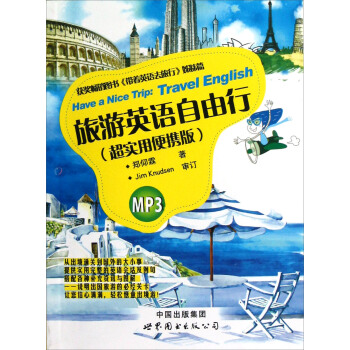

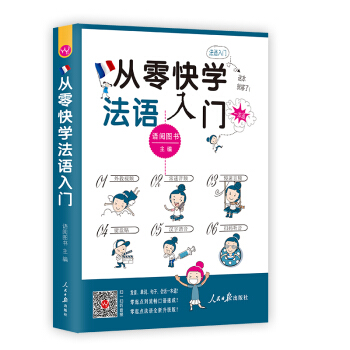
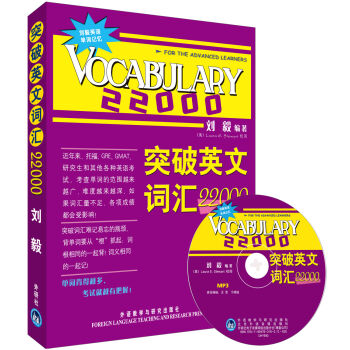

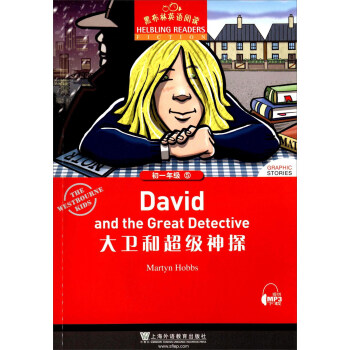
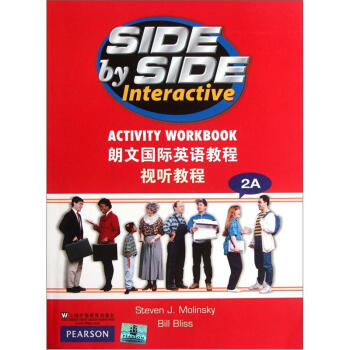
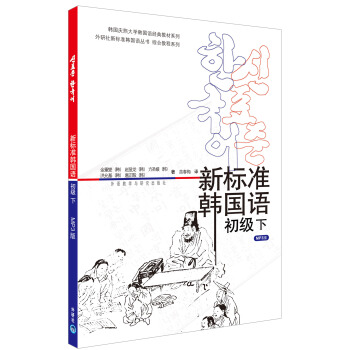
![新概念英語配套輔導講練測係列圖書·新概念英語1:同步聽力訓練(新版,附光盤) [New Concept English] pdf epub mobi 電子書 下載](https://pic.tinynews.org/11506499/53d22944N80341760.jpg)
